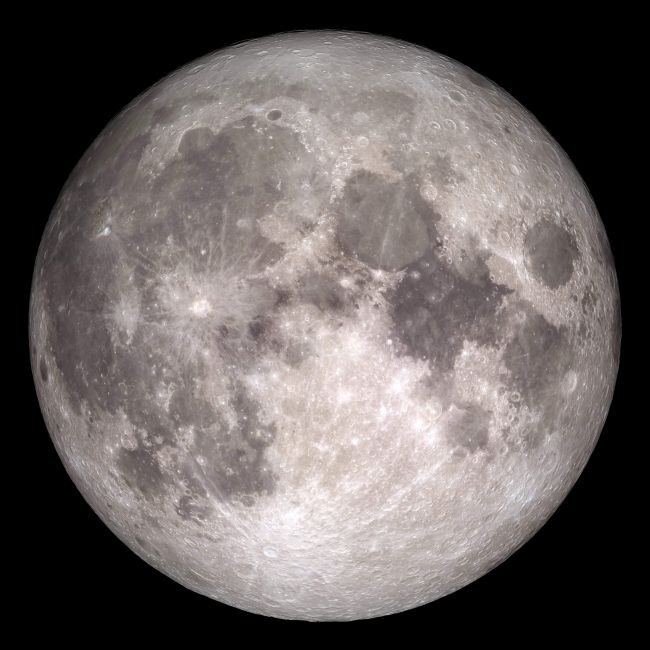
NASA's prolific Lunar Reconnaissance Orbiter (LRO) found rich evidence of iron and titanium oxides under the surface of the moon, which may show a close connection with Earth's early history.
Scientists have been debating how the moon formed for decades. The leading theory suggests that a Mars-size world collided with Earth billions of years ago. The colliding world shattered upon impact and blasted part of the proto-Earth's surface into space. The debris surrounded Earth with a ring; the moon we see today is the result of that ring slowly collapsing under its own gravity.
The moon's chemical composition, however, doesn't show clear evidence of that theory. The lunar highlands on the moon, visible from the Earth as bright regions, have rocks with smaller amounts of metal-bearing minerals relative to our planet.
That could make sense if Earth was already layered, with heavier metals sunk to the core — except that the moon's dark maria planes formed at the same time and have higher metal abundance even than Earth's rocks.
LRO's new findings could explain the discrepancy. The new research relies on a device called the Miniature Radio Frequency (Mini-RF) instrument, a radar probe designed to map lunar geology, look for water ice and test communications technologies.
The instrument scoured the terrain in the moon's northern hemisphere for an electrical property called the dielectric constant. This constant is a number comparing the ability of a material to transmit electric fields with that of the vacuum of space.
Electric-field transmission is useful to find ice in the shadows of craters, where it is protected from the heat of the sun. But it can also identify areas where more metals, like iron and titanium oxides, are exposed to the surface.
And the scientists noticed that the dielectric constant increased with crater size, but only up to a certain point. Craters between 1 and 3 miles (2 and 5 kilometers) in diameter showed the dielectric constant increased steadily as the craters grew larger. For craters between 3 and 12 miles (5 to 20 km) wide, however, the constant held steady.
"It was a surprising relationship that we had no reason to believe would exist," Essam Heggy, co-investigator of the Mini-RF experiments from the University of Southern California in Los Angeles and lead author on the new research, said in a NASA statement.
The team's theory was that the first few hundred feet (or meters) of the moon's surface has few of these oxides, but a richer source of metal lies further below. Then, as meteors collide with the lunar surface and scratch away upper layers, metals become exposed. That sort of pattern would also explain low metal levels in the lunar highlands and higher abundances in the darker and lower plains closer to the moon's subsurface.
To test their work, researchers compared Mini-RF's crater-floor radar images with metal oxide maps produced by a range of missions: LRO Wide-Angle Camera, Japan's Selenological and Engineering Explorer (SELENE) mission (also called Kayuga) and NASA's Lunar Prospector spacecraft. SELENE and Lunar Prospector are no longer operating, but their archival data remains.
Those observations showed that larger craters did indeed contain more metal, according to NASA, which the researchers believe support their hypothesis about buried metallic deposits that meteors excavate.
The results are even more intriguing in light of a puzzling phenomenon reported in 2019 by NASA's Gravity Recovery and Interior Laboratory (GRAIL) mission, at the moon. Gravity measurements of the moon suggest there is a lot of dense material that is tens to hundreds of miles (or kilometers) underneath the moon's massive South Pole-Aitken basin. The GRAIL results, paired with LRO's new find, thus suggest metals may be more concentrated in certain regions of the moon.
The LRO results are one small step to better understanding how the moon formed, as the observations show how iron and titanium oxides are distributed beneath the moon's northern hemisphere. Next, the researchers will be looking at crater floors in the southern hemisphere to see how much metal is there.
A study based on the research was published Wednesday (July 1) in Earth and Planetary Science Letters.
Follow Elizabeth Howell on Twitter @howellspace. Follow us on Twitter @Spacedotcom and on Facebook.



Reader Comments
RC